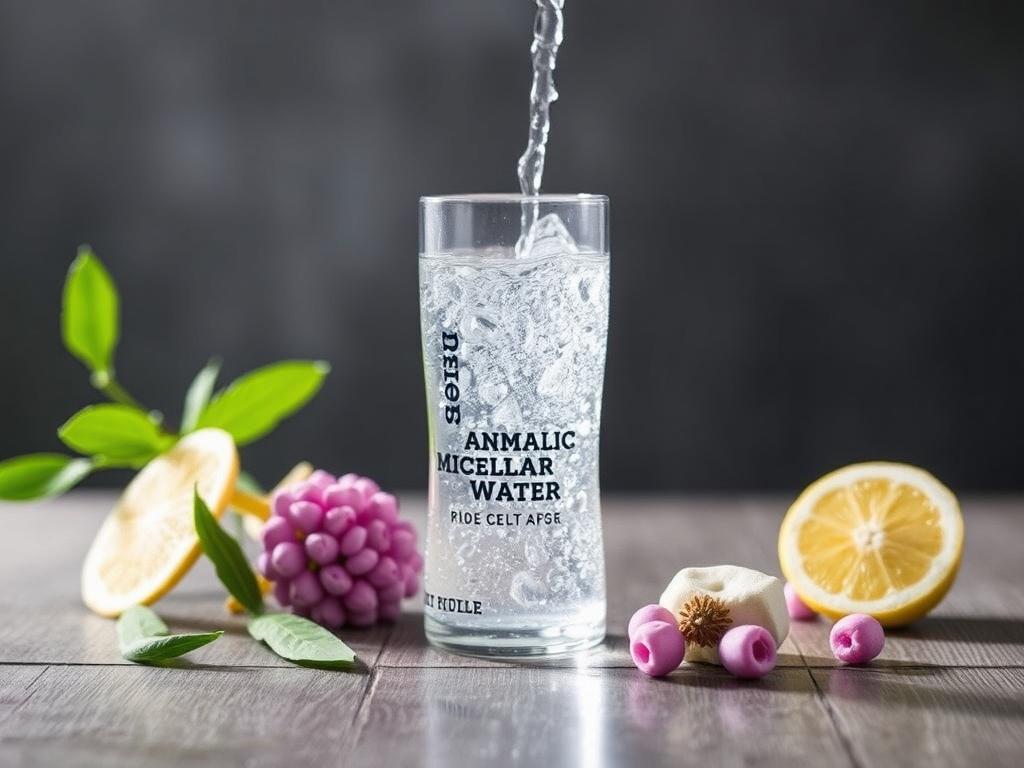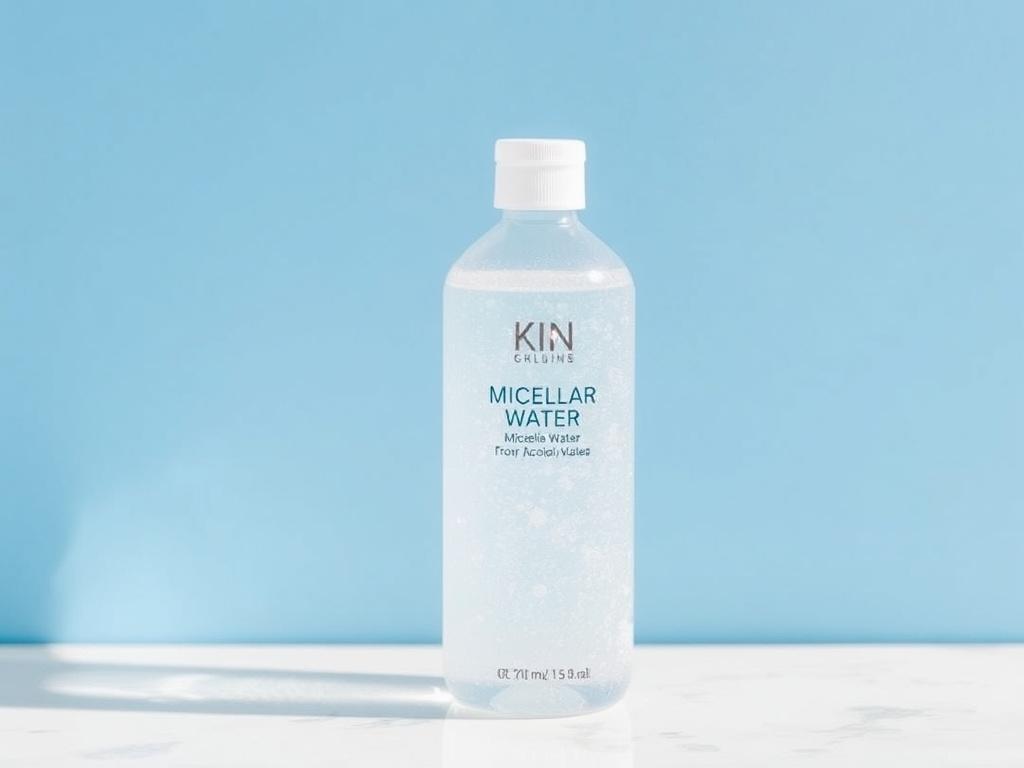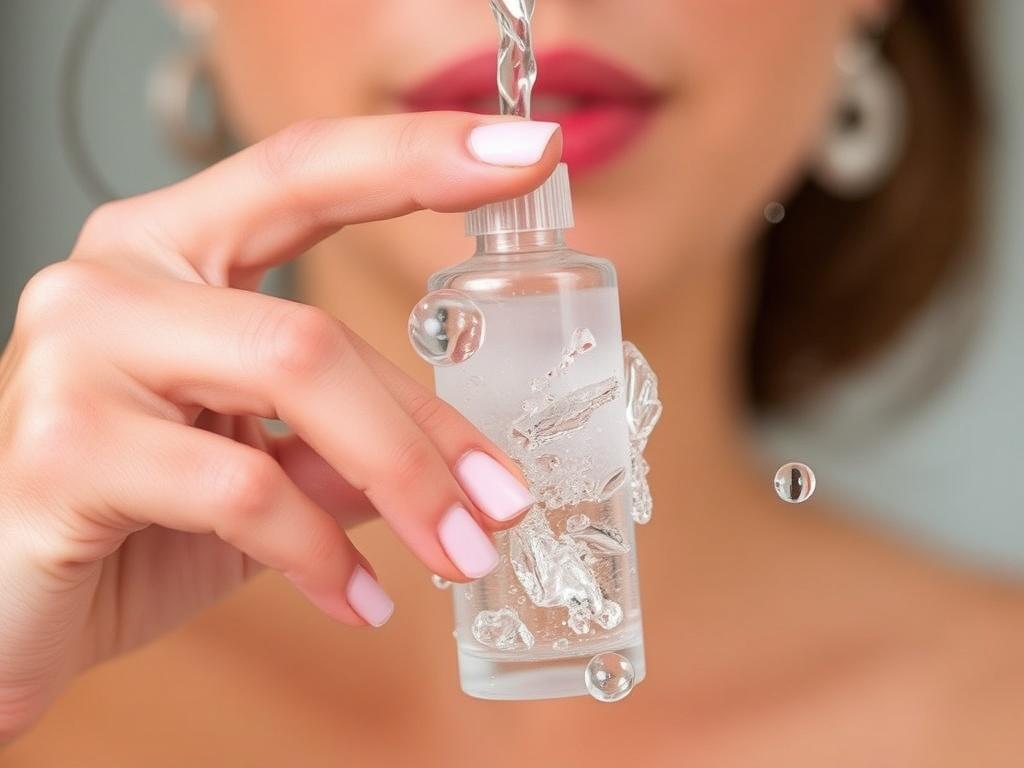Содержание статьи
- 1 What Is Micellar Water?
- 2 How Does Micellar Water Work?
- 3 The Benefits of Using Micellar Water
- 4 Common Misconceptions About Micellar Water
- 5 How to Use Micellar Water Effectively
- 6 Micellar Water in Your Skincare Routine: Integrations and Alternatives
- 7 Popular Myths Debunked: What Experts Say
- 8 The Environmental Angle: Is Micellar Water Sustainable?
- 9 Final Thoughts: Should You Try Micellar Water?
- 10 Conclusion
In the world of skincare, every so often a product comes along that promises to revolutionize your routine. Micellar water is one such product that has recently taken the beauty industry by storm. Advertised as a gentle yet effective cleanser that removes makeup, dirt, and oil with just one swipe, it’s no wonder people are curious: is micellar water the holy grail of skincare or just another overhyped trend? In this article, we will dive deep into what micellar water actually is, how it works, its benefits, who should use it, and some common misconceptions. By the end of this read, you’ll have a clear idea of whether micellar water deserves a spot on your bathroom shelf.
What Is Micellar Water?
At its core, micellar water is a type of cleanser composed primarily of purified water, gentle surfactants, and tiny molecules called micelles. Micelles are microscopic balls of cleansing oil molecules suspended in water. These micelles are key to how this product functions—they attract dirt, oil, and makeup like magnets without drying out the skin. This makes micellar water an interesting hybrid between a toner and a cleanser.
Unlike traditional cleansers that often require rinsing with water, micellar water is typically used with a cotton pad to wipe the face clean, making it very convenient for quick makeup removal or cleansing on the go. It originated in France but has since gained global popularity in beauty routines around the world.
How Does Micellar Water Work?
Understanding how micellar water works requires a bit of science, but don’t worry—we’ll keep it simple. Surfactants in micellar water reduce the surface tension of water, allowing the micelles to trap and lift away impurities. These micelles, composed of hydrophobic (water-repelling) and hydrophilic (water-attracting) parts, act like tiny magnets that attract oil and grease from the skin, trapping it inside the micelle.
When you swipe the soaked cotton pad across your face, the micelles adhere to stubborn makeup and excess oils, leaving your skin feeling fresh and clean without the need for rinsing. Because of this gentle action, micellar water is often recommended for sensitive skin types, or for those wanting a mild daily cleanser.
Table: Comparison of Cleansing Methods
| Method | How It Works | Pros | Cons |
|---|---|---|---|
| Traditional Cleansing Oil | Dissolves makeup and oil, requires rinsing with water | Effective for heavy makeup; hydrates skin | Can feel greasy; messy to use |
| Foaming Cleanser | Uses surfactants to create lather that lifts dirt and oil | Deep cleaning; refreshing | Can strip natural oils; may irritate sensitive skin |
| Micellar Water | Uses micelles to attract and trap dirt and makeup | Gentle; no rinsing needed; good for sensitive skin | Less effective on waterproof makeup; can require multiple swipes |
The Benefits of Using Micellar Water
There are several reasons why micellar water has become so popular, and many people swear by it as an essential step in their daily skincare regimen. Here are some of the standout benefits:
- Gentle Cleansing: Micellar water is designed to cleanse without harshly stripping the skin of its natural oils, which makes it suitable for sensitive or dry skin types.
- Convenience: Because it doesn’t require rinsing, micellar water is perfect for quick makeup removal or cleansing while traveling.
- Multi-tasking: Many micellar waters not only cleanse but also tone and hydrate, effectively giving three benefits in one product.
- Minimal Irritation: Without fragrances, alcohol, or harsh chemicals in many formulas, micellar water reduces the risk of redness or irritation.
- Hydration Boost: Some versions of micellar water contain added ingredients like glycerin or aloe vera that help boost skin hydration.
Who Should Use Micellar Water?
If you have sensitive skin, micellar water is often hailed as a miracle product because it cleanses thoroughly without causing dryness or irritation. Moreover, those who prefer a minimalist routine can appreciate its multi-purpose functionality. Newcomers to skincare or people who want a quick evening cleanse after a long day also find micellar water incredibly useful.
That said, micellar water might not always be sufficient for everyone. For example, people who wear waterproof or heavy-duty makeup might find it less effective compared to oil-based cleansers or double cleansing methods. Also, if you have very oily or acne-prone skin, you may need a stronger cleanser in your routine alongside micellar water.
Common Misconceptions About Micellar Water

Despite its popularity, micellar water is sometimes misunderstood. Let’s clear up some of the most common myths that can create confusion:
- Myth 1: Micellar water replaces all your skincare products. While it can cleanse effectively, it’s not a moisturizer, sunscreen, or treatment product. You still need to follow up with other steps in your skincare routine.
- Myth 2: It is only for sensitive skin. Micellar water suits almost all skin types but may need to be paired with other products for oily or acne-prone skin.
- Myth 3: You don’t need to rinse. Technically, micellar water is designed to be a no-rinse cleanser, but some people prefer to rinse after use to avoid any residue or build-up.
- Myth 4: All micellar waters are the same. This couldn’t be further from the truth—formulations differ widely. Some include fragrances and alcohol, so it’s important to check the label based on your skin’s sensitivity.
How to Use Micellar Water Effectively
To get the most out of your micellar water, using it correctly is just as important as the product itself. Here is a simple step-by-step guide to using micellar water:
- Choose the right type: Pick a micellar water formulated for your skin type—hydrating for dry skin or purifying for oily skin.
- Soak a cotton pad: Generously saturate a cotton pad with micellar water.
- Wipe gently: Glide the cotton pad over your face, focusing on areas with makeup and dirt. Avoid rubbing harshly.
- Repeat if necessary: Use additional cotton pads until the pad comes away clean.
- Follow with moisturizer: Finish your routine by applying a moisturizer to lock in hydration.
Tips for Different Skin Types
| Skin Type | Micellar Water Recommendation | Additional Tips |
|---|---|---|
| Dry/Sensitive | Fragrance-free, hydrating formulas | Use sparingly; follow up with nourishing moisturizer |
| Oily/Acne-prone | Purifying micellar water with salicylic acid or tea tree oil | Complement with targeted acne treatments after cleansing |
| Combination | Balanced formulas with light hydration | Focus on cleansing oily zones thoroughly, hydrate dry areas |
| Normal | Any gentle, soothing micellar water | Use as a first cleanse or refresh throughout the day |
Micellar Water in Your Skincare Routine: Integrations and Alternatives

If you’re wondering how micellar water fits into the broader scheme of skincare, it’s versatile. Some people use it as a first cleanse step in a double cleansing routine, removing makeup first and following up with a foaming cleanser to ensure all residues are gone. Others use micellar water as a quick cleanse when they don’t have time for a full routine or need a gentle refresh.
For makeup removal, micellar water is ideal for light to moderate makeup users but might struggle to completely remove waterproof mascara or long-wear foundation. In these cases, pairing micellar water with an oil-based makeup remover or cleansing balm works well.
Alternatives to micellar water include makeup wipes, but these can be harsher on the skin and less eco-friendly. Traditional cleansers require water but often provide a deeper clean. Micellar water’s “no-rinse” formula appeals because it’s waterless, portable, and skin-friendly.
Popular Myths Debunked: What Experts Say
Dermatologists and skincare experts generally regard micellar water as a safe, effective product when used as directed. However, they often caution that it shouldn’t replace a regular cleansing routine that involves water-based cleansing unless you are in situations where rinsing isn’t possible, such as camping or long travels.
Some professionals warn that relying exclusively on micellar water may not be enough for people with oily or acne-prone skin because it won’t deeply clean pores as effectively as some foaming or exfoliating cleansers. Still, micellar water remains a valuable tool because it hydrates and removes surface impurities without irritation.
The Environmental Angle: Is Micellar Water Sustainable?
In today’s world, sustainability is a huge consideration for many consumers. Micellar water bottles often come in plastic containers like many skincare products, so the environmental impact depends on packaging choices and usage habits. Compared to makeup wipes, micellar water is more eco-friendly, as it requires fewer single-use items.
Some brands have responded to this by creating refillable bottles or biodegradable cotton pads to use alongside micellar water. Another sustainability win is that micellar water can reduce water usage since it doesn’t require washing with water each time.
Final Thoughts: Should You Try Micellar Water?
If you’re attracted by the idea of a gentle, convenient cleanser that removes makeup and impurities in one step, micellar water is worth a try. It is especially well-suited for those with sensitive, dry, or normal skin who want an easy-to-use product that won’t cause irritation. It’s travel-friendly, multipurpose, and can simplify your routine.
However, it’s important to set realistic expectations. While micellar water removes surface dirt and light makeup effectively, it’s not always the best option for removing heavy, waterproof, or long-lasting makeup. For oily or acne-prone skin types, additional or alternative cleansers might be necessary for optimal pore cleansing.
Ultimately, micellar water is not a magic cure-all, but a highly useful product that can fit neatly into many skincare regimens. Whether it becomes your skincare holy grail or just a handy tool in your kit depends on your unique skin needs, lifestyle, and expectations. Testing and observing how your skin responds will always be the best way to decide if micellar water deserves a place in your daily routine.
Conclusion

Micellar water has earned its hype through its gentle cleansing ability, convenience, and versatility, making it an appealing option for many skincare enthusiasts. While it is not a miracle product capable of replacing all cleansers or solving every skin issue, its hydrating and no-rinse formula suits a wide audience, especially those with sensitive or dry skin. By understanding what micellar water can and cannot do, you can make an informed decision about whether to include it in your regimen. The truth lies somewhere between hype and holy grail—micellar water is a valuable skincare product, but like any product, it works best when used thoughtfully and as part of a broader, well-rounded approach to skin health.

